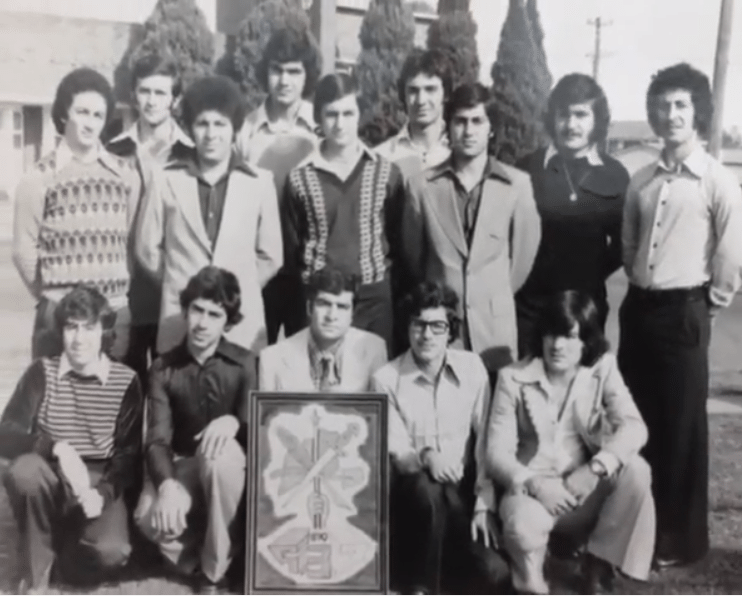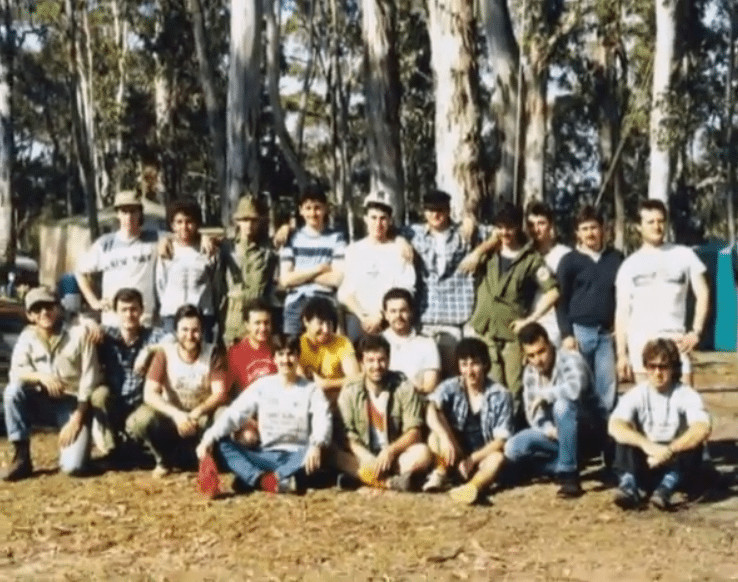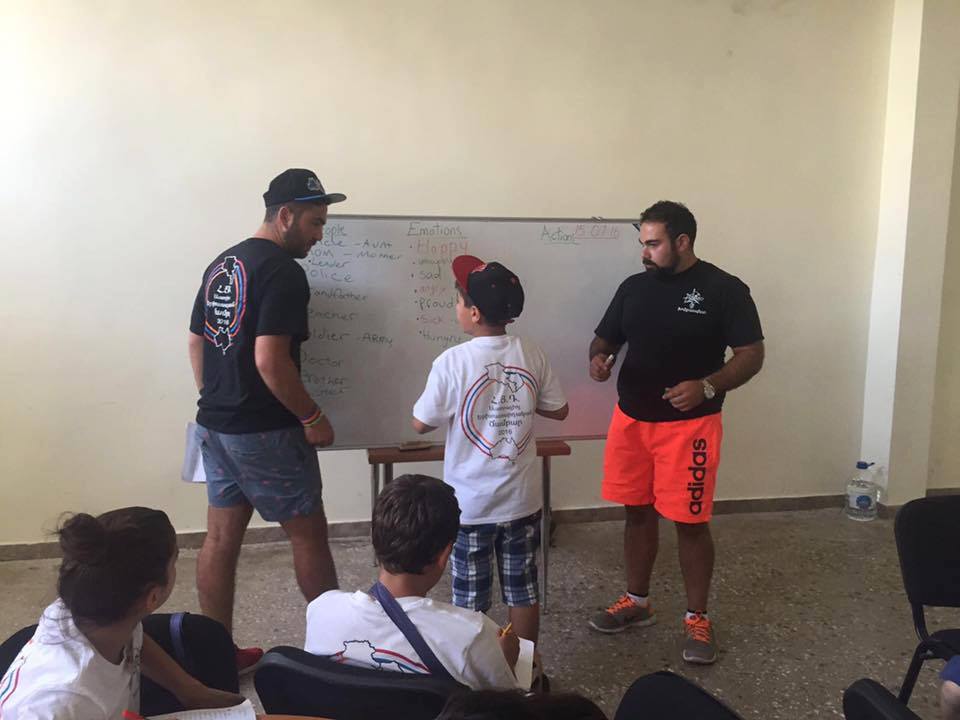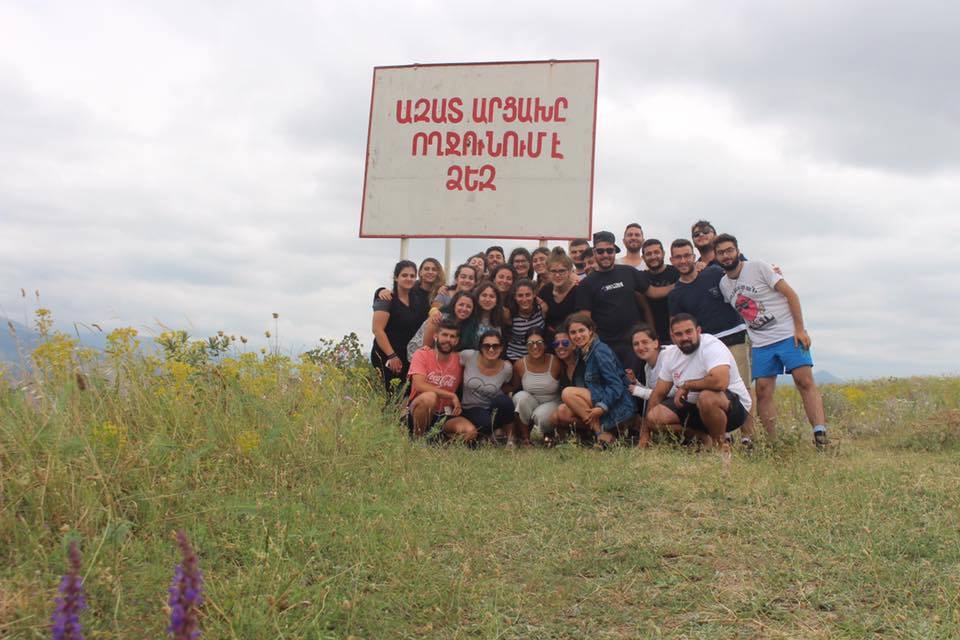An Interview with AYF Australia Central Executive Chairperson Aram Tufenkjian
Special for the Armenian Weekly
WATERTOWN, Mass. (A.W.)—The Armenian Youth Federation (AYF) is an 84-year-old organization that has spread its roots across the globe, establishing a presence in over ten regions where active young Armenians reside. Although it was founded in 1933 in Boston under the initiative of the Armenian Revolutionary Federation (ARF) Central Committee of America and the inspirational teachings of General Karekin Nejdeh, the AYF eventually expanded into countries including Canada, Lebanon, France, Brazil, Iran, Armenia, and even Australia.
All these different chapters and regions were formed throughout the course of the 20th century with the mobilization and organization of its youth. In Australia’s case, the AYF there began almost half a century after its founding in the U.S.
Armenian migration to Australia began in the 1850s, with Armenian merchants and traders arriving in small numbers from India and the Far East. The next phase came from the survivors of the Armenian Genocide, however, compared to other countries that took in refugees, the numbers were not so significant. The final and most recent wave came following World War II and the 1960s, where most Armenians chose Australia as their new destination, forming today’s Australian-Armenian community.
The Armenian community in Australia is primarily concentrated in Sydney, which is where the AYF in Australia was established in 1979. ARF Bureau member Papken Papazian from Lebanon visited Australia a year earlier and encouraged young Armenians to form an AYF group. Papazian essentially placed the foundation for the AYF and provided the necessary support for one to be formed. From then on, the already established ARF Tro gomideyutiun immediately went to work and appointed regional bodies and chapters within Australia. Almost 40 years later, the AYF has expanded into three chapters, both senior and junior.
Last week, the Armenian Weekly had the opportunity to catch up with AYF Australia “Nigol Touman” member and chairperson of the Central Executive of AYF Australia Aram Tufenkjian to discuss his organization’s recent growth in activism. Tufenkjian was in Boston attending the biennial AYF Tri-Regional Seminar, which took place at AYF Camp Haiastan in Franklin and was hosted by the AYF-YOARF Eastern U.S.
According to Tufenkjian, the first AYF chapter in Australia was formed in Northern Sydney. The organization later expanded to Western Sydney. Recently a chapter was also formed in Melbourne. Aram explained that the main concentration of Armenians today is in these three cities as well as Adelaide, which is in South Australia. Adelaide has a small Armenian community that was formed due to the migration of Syrian-Armenian refugees as a result of the Syrian Civil War.
“Over the years, AYF Australia has worked on a wide range of programs and events addressing all the pillars of the AYF: social, political, and cultural,” Tufenkjian explained. “April 24 protests, ‘die-ins’, as well as social fundraisers and banquets are just some examples of the work we do these days,” he added.
The AYF chapters in Australia include Northern Sydney “Nigol Touman,” Western Sydney “Pegor,” and Melbourne “Arapo.” The AYF junior chapters include Northern Sydney “Kale,” Western Sydney “Khanasor,” and Melbourne “Karekin Njteh.” The AYF Central Executive in the region was formed six years ago when there was a need in the region based on the number of members. Northern Sydney and Western Sydney are a lot closer to each other and have the ability to cooperate more often than with Melbourne.
“Most recently, AYF Australia organized its own AYF Youth Corps program, which took place in the summer of 2016 in Nor Nork, just outside of Yerevan,” said Tufenkjian. AYF Youth Corps is a program that was founded in 1994 by the AYF Western U.S. following the ceasefire in Artsakh, with the goal of sending young Armenian diasporans to Artsakh to help rebuilt villages. In 2008, the program took another direction when it changed into a day camp for underprivileged youth in Armenia and Artsakh. Today, AYF regions around the world host their own version of Youth Corps in villages throughout Armenia, Artsakh, and Javakhk.

AYF members participate in a hunger strike against the blockade in Artsakh in the last days of the Soviet Union
Aram explained that AYF Australia’s Youth Corps resulted directly from transnational cooperation with another AYF region, in this case the AYF Western U.S. “Many members in Australia see the great programs that AYFs do worldwide like Youth Corps and it convinces us to participate while motivating us to undertake similar initiatives,” explained Tufenkjian.
In 2015, five AYF Australia members participated in AYF Western U.S.’s Youth Corps program. “After learning more about the program and working with the AYF Western U.S. on logistics and the overall operation, we were able to host our own the following year with 26 counselor.”
Nor Nork’s youth center’s renovation was funded by ARF Australia and its affiliate organizations and has become a sister center to the youth center in Sydney. AYF Australia’s first year of Youth Corps was held there. The region plans to make is a biennial program.
Aram explained that he expects to see further cooperation with other regions because it would be beneficial for all AYF members to learn from one another and exchange ideas. He continued to express his excitement in participating in this year’s AYF Tri-Regional Seminar. Members from the host AYF Eastern U.S, the AYF Western U.S. and AYF Canada were joined by Aram and another member from Australia— Koko Karakozian.

Most recently, AYF Australia organized its own AYF Youth Corps program, which took place in the summer of 2016 in Nor Nork, just outside of Yerevan.
The two members from Australia also had the opportunity to visit and meet the staff of the Hairenik in Watertown as well as some of the community’s other historic institutions.
In this age of technology, with social media making communication easy and convenient, Aram insisted that cross-country exchanges need to be a regular occurrence.
“There are chapters everywhere from Greece and Jerusalem to Lebanon and South America. We really don’t do a good job of communicating with each other,” said Tufenkjian. “As the younger generation, we should be forming more relations, especially since we have access to so much technology.”
Aram stressed that regardless of where an AYF member may be from, when ungers meet, they immediately form a bond. “The shared ideology and set of beliefs is what sets your relationship apart from anything else. Seminars, like Tri-Regionals, which bring several regions together, are extremely helpful in accelerating and continuing the work of the AYF,” he said.
When asked about some of the challenges the organization in Australia faces, Aram told the Armenian Weekly that unfortunately there is still a negative stigma associated with the AYF and the ARF, which pushes certain community members away. Many community members, according to Tufenkjian, attach a negative view of the ARF based on certain events in its history. As a result, groups have tended to shy away from participating in AYF related events.
Tufenkjian also explained that although Melbourne is a new chapter, it is geographically far from the other two chapters and hosting joint events becomes difficult.
Geographic isolation is a problem for Australia in general. AYF Australia is relatively far from other regions and had not previously participated in a Tri-Regional type event. The isolation has also made it difficult for other regions to visit and meet with its membership. However, Aram was hopeful that this should motivate the region to host multi-regional events and invite others to Australia.
During his short visit to the Armenian Weekly, Aram made it clear that the AYF in Australia is consistently improving and headed towards a successful future.
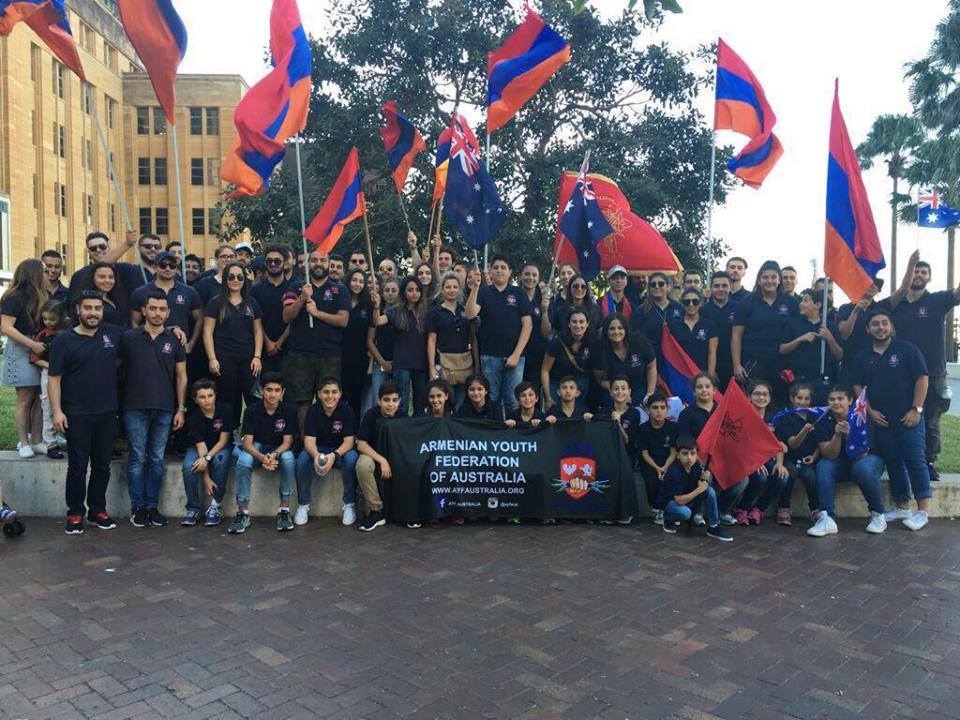
A scene from the 2017 March for Justice, organized by AYF Australia members on the 102nd anniversary of the Armenian Genocide
“I definitely see our community moving forward along with our numbers increasing,” said Tufenkjian. “The AYF is changing perspectives in the community and the youth in Australia is becoming more active. Just look at the case of the Western Sydney chapter. It had formed in the early days of the organization but it dissolved shortly after due to inactivity. In the last decade, it has restarted and is prospering at a steady rate.”
Regarding some upcoming initiatives, Aram discussed a march that the AYF is planning in honor of the International Day of Commemoration and Dignity of the Victims of the Crime of Genocide and of the Prevention of the Crime. He said that this march would be organized with other groups of people in Australia that have experienced similar struggles and atrocities including the native people of Australia, and the Sudanese, Greek, Assyrian communities.

AYF Australia members Koko Karakozian (L) and Aram Tufenkjian (R) updating AYF Tri-Regional Seminar participants on AYF Australia’s activities (Photo: Knar Bedian)
Tufenkjian also hinted of the possibility of the AYF Australia hosting an international seminar with other regions on the 40th anniversary of the region and the 85th anniversary of the AYF.
Tufenkjian hopes that AYF Tri-Regional Seminar would have long-term effects for the AYF globally. “By developing the necessary tools and relations, we will surely do wonders for the Armenian Cause.”
Source: Armenian Weekly
Link: From the Land Down Under to the ‘Other Hairenik’


